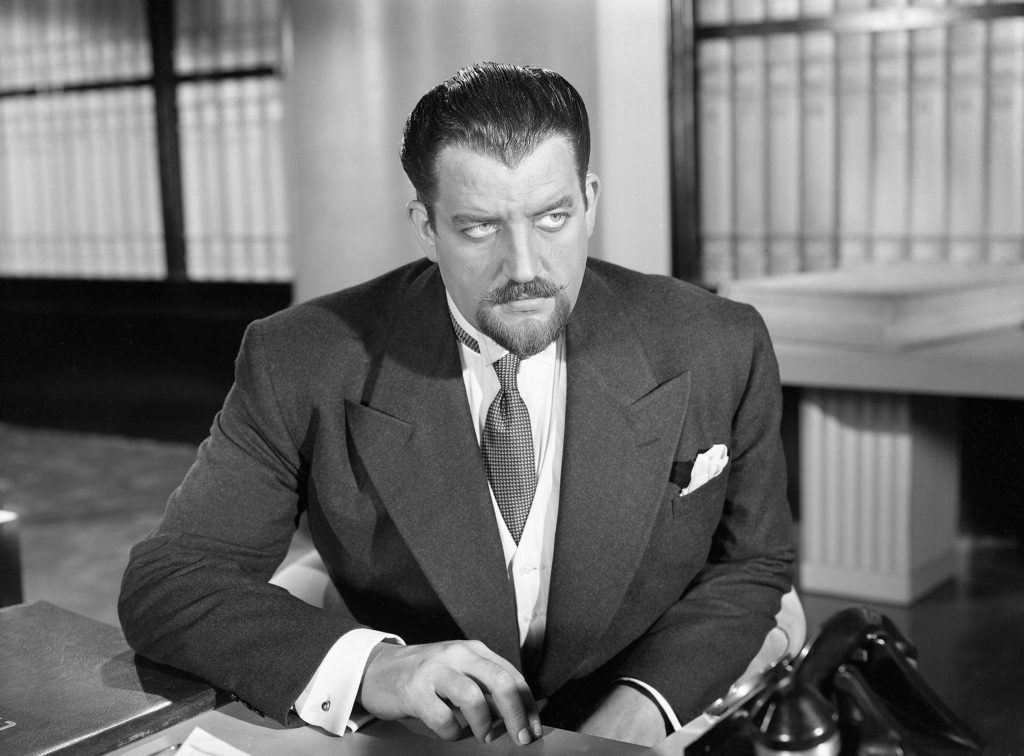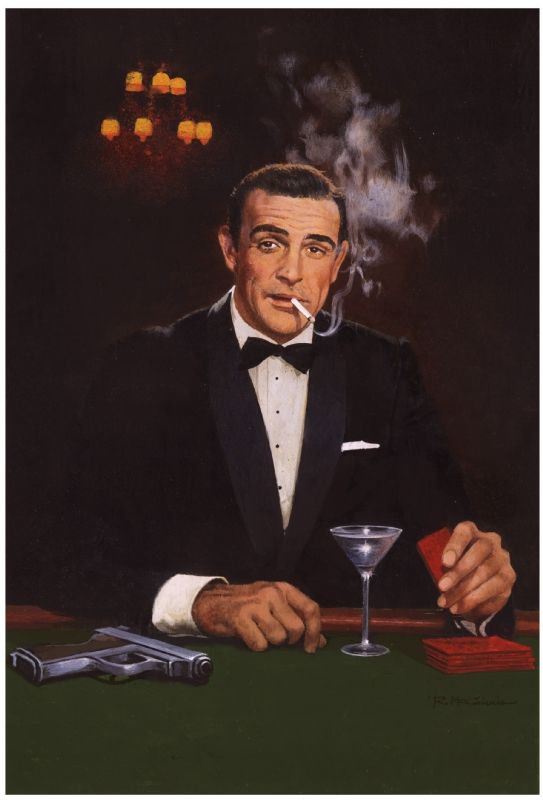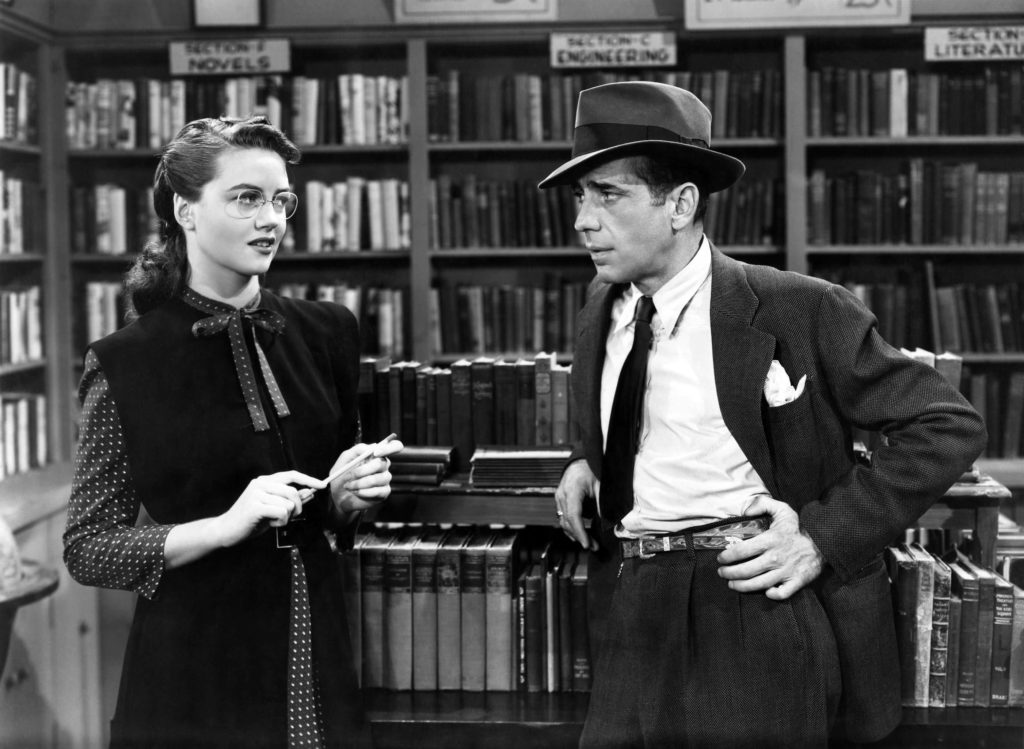
If you follow us on social media (especially during #Noirvember), it’s no secret, we love Film Noir. Why? Well, we wrote about that, but the TL;DR version—we love an underdog.
And that’s what Film Noir was in a nutshell. It was usually a small-budget movie from a B Studio. The reason they “painted with light,” was that it was far cheaper to do that than create some extravagant set.
But that’s what makes it awesome. It didn’t have the glamor of an MGM musical and the cast of characters was more rough-hewn and world-weary. And that’s probably what gives it the staying power. Why 80 years later we’re talking about these films. They still feel real.
And that realness doesn’t just come from the Robert Mitchums or Humphrey Bogarts, or the beautiful femme Fatales. It comes from the supporting cast, the citizens of noir who give the movies life; dreary, sad, and beat down life.
Thelma Ritter
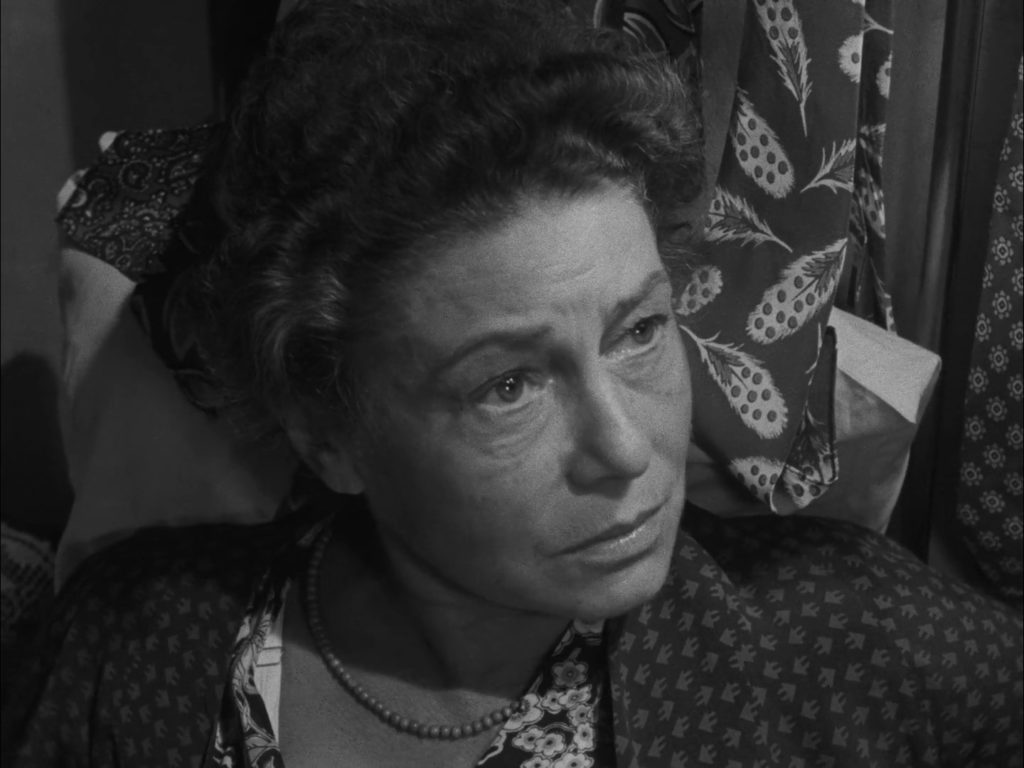
Pickup on South Street (1953) has a great cast with a snappy dialogue. But nobody shines like Thelma Ritter who plays Moe, the streetwise necktie vendor and stool pigeon who just wants a nice gravesite out on Long Island. I first saw Ritter when she played Jimmy Stewart’s nurse in Rear Window (1954). She’s great in both. But this role might be the best of her career.
Pickup on South Street is excellent. In it, Skip McCoy (played by Richard Widmark), picks a girl’s pocket, not knowing she’s carrying top-secret information the Russian spies are after.
The cops come to Moe, a hustler who only cares about her wad of cash. With which she plans to buy herself a plot in a nice cemetery in Long Island, saying
“If I was to be buried in Potter’s Field, it’d just about kill me”
Only Sam Fuller could take a stool pigeon—considered the lowest of the lowlifes—and elevate her to a heroine. But like a coach, the director can only do so much, it takes the players to get the work done and win the game. In South Street, Thelma might not have been the star player, but she was a big piece of a winning formula.
Elisha Cook Jr.
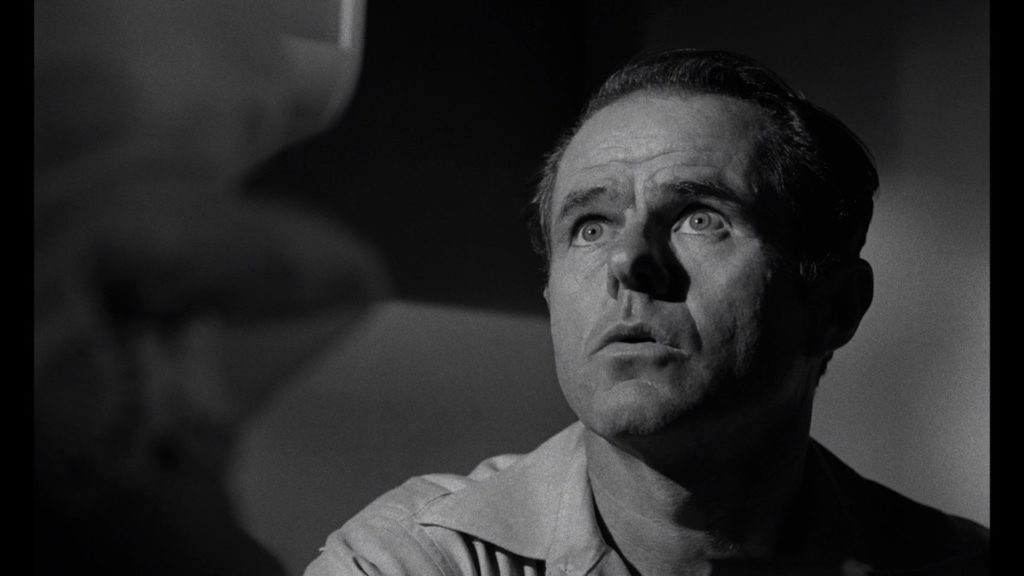
This guy was in a million film noirs and many other genres. The big ones; The Maltese Falcon (1941), The Big Sleep (1946), The Killing (1956), and Born to Kill (1947). In almost all of these films, he’s a sniveling, cowardly, conniving, and or neurotic villain. Some other film noirs; he plays Marilyn Monroe’s uncle in Don’t Bother To Knock (1952), Blonde Alibi (1946), I Wake Up Screaming (1941), Phantom Lady (1944), Dark Mountain (1944), The Long Night (1947), and many, many more.
If you want to just follow one actor’s career and watch as many Film Noir’s as possible, forget Bogart and Mitchum, just watch all the ones Elisha Cook Jr. did. He’s a great supporting character in all of them, and always memorable.
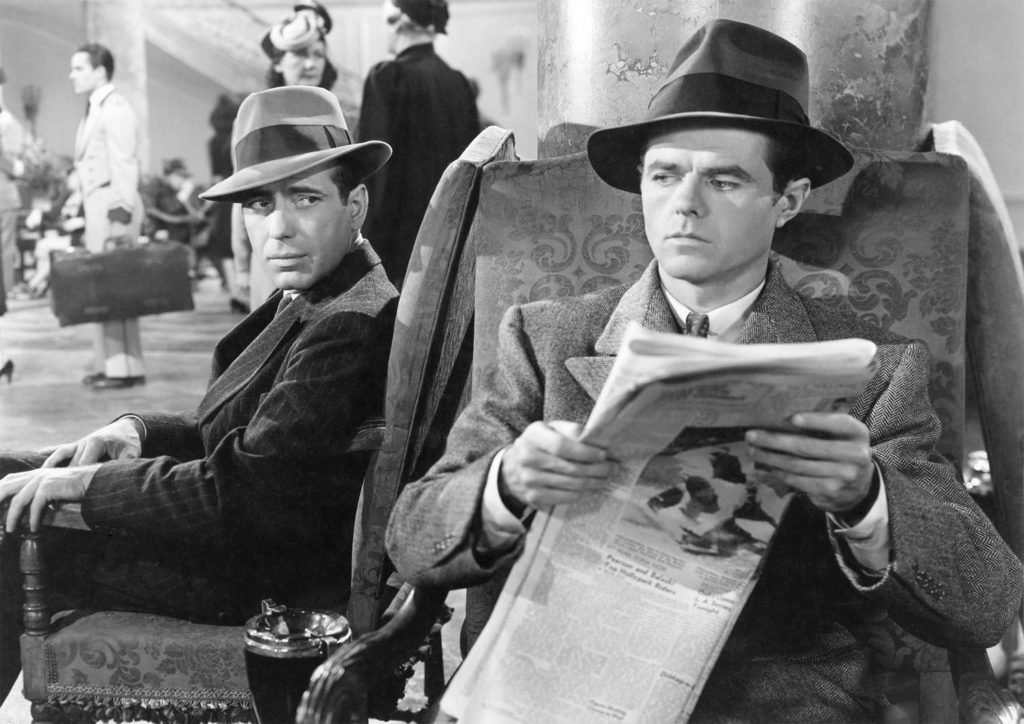
Cook’s career spanned decades, and he was also in the neo-noir The Outfit (1973)—based on the Parker novel—House on Haunted Hill (1959), Rosemary’s Baby (1968), and Salem’s Lot (1979).
He’s also in It Came Upon A Midnight Clear (1984). Which I will admit is a corny made for TV Christmas movie, but it’s a corny made for TV Christmas movie that we watch in the Pagourgis household every year. The plot is, ex-NYPD detective Mike Halligan (Mickey Rooney), dies and has to go back to earth to find an angel whose job is to spread Christmas cheer. But said angel is too busy getting drunk to do his job. He takes his LA native grandson (Scott Grimes) to help find this fallen angel. It’s fun.
Dorothy Malone
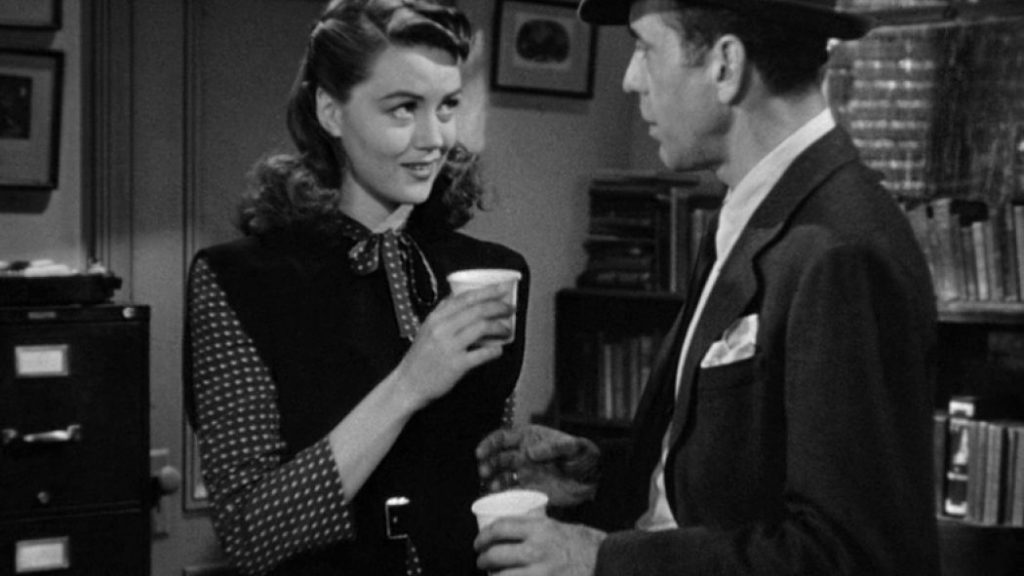
When I watched The Big Sleep for the first time I kept asking myself, “why doesn’t he go back to that book store and hang with that girl?” Dorothy Malone absolutely steals the show in The Big Sleep as the thirsty bookseller at the ACME Bookshop.
When Marlowe heads into the bookstore to do his homework on his case, he meets this unnamed girl played by Malone. After a lot of flirting and some shop talk—it starts to rain. Bogey says, “You know, as it happens I have a bottle of pretty good rye in my pocket. I’d a lot rather get wet in here.” They share a glass of rye.
After a few sips, Malone goes to the door, flips the ‘Open” sign to ‘closed,’ lowers the shade, takes off her glasses, and says,
“Looks like we’re closed for the rest of the afternoon.”
And that ladies and gentlemen is a Hays Code-era sex scene.
The Big Sleep was Malone’s first big break and led to bigger roles like in Two Guys from Texas (1948), her first lead role. She was in Torpedo Alley (1952), Scared Stiff (1953), The Fast and the Furious (1955), and the TV show Peyton Place (1964-68). She had a steady career right through the 80s. Her last on-screen part was in Basic Instinct (1992).
Jay C. Flippen
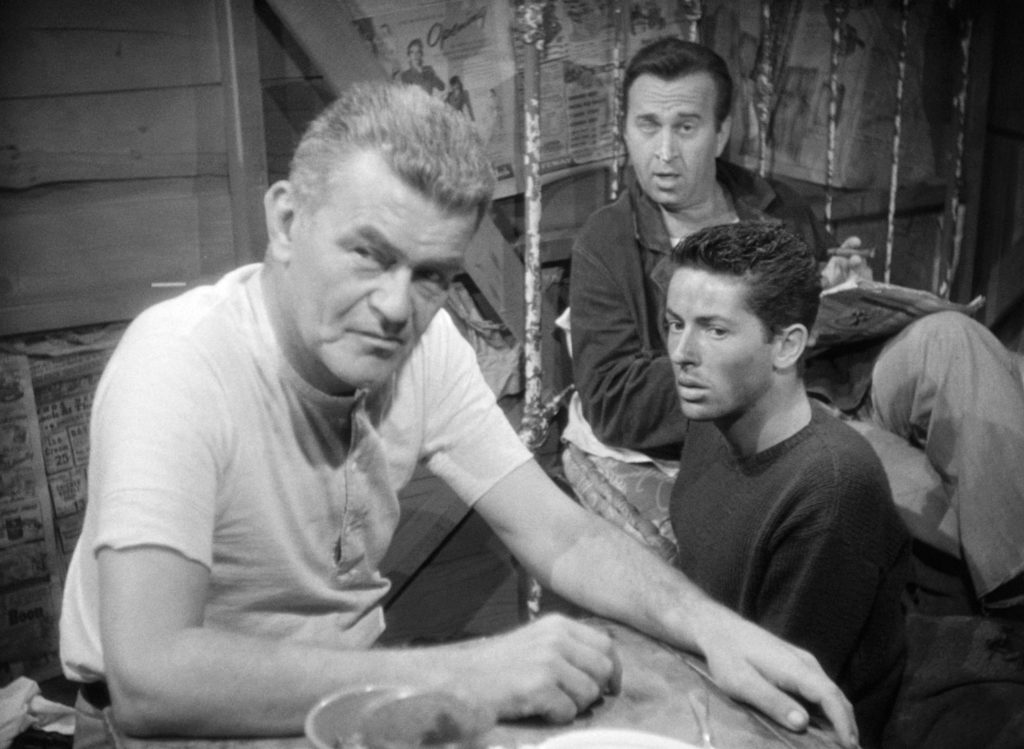
Jay C Flippen often played either a cop, a criminal, or a criminal cop in a lot of movies during the 40s and 50s. In They Live by Night (1948) he plays T-Dub a conniving escaped convict who just can’t help but rob people.
The guy had a face for noir, you know? I mean look at him, that’s a tough-looking sonofabitch, Farley Granger is not in good company.
Speaking of bad company. Flippen is just as memorable and tough-looking in The Killing (1956) as Marvin Unger, a career criminal and part of an ill-fated heist. Fun fact. Before acting on the big screen he was in vaudeville and a radio announcer for New York Yankees games.
Laird Cregar
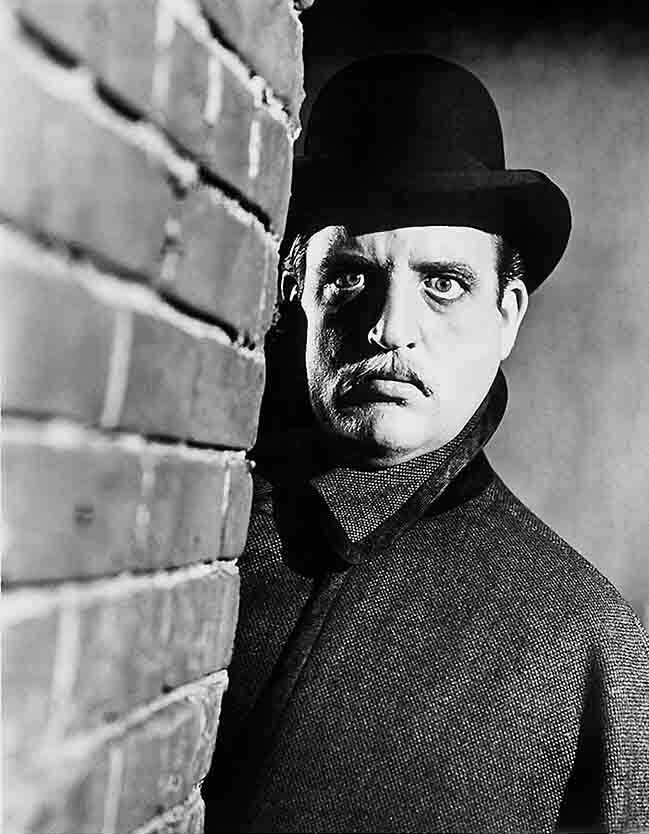
This is a sad one because Laird Cregar died at the age of 31, right when his career was taking off. He was like the John Cazale of the 1940s. Most of his roles were not as supporting cast. But due to his untimely death, he’s not as well-remembered today and therefore I think worthy of making this list.
Born in Philadelphia, Cregar went to school in England where he first appeared on stage. He moved back to the states and started work in the Federal Theater Project. A New Deal Public Works program that nurtured the careers of people like Orson Welles, Arthur Miller, Burt Lancaster—a lot of people.
He was in the Film Noir, This Gun For Hire (1942), opposite Alan Ladd and Veronica Lake. He was also in I Wake Up Screaming (1941) where he plays an obsessed detective.
But it was in The Lodger (1944) where he may-or-may-not-be Jack the Ripper that he gained stardom. He’s creepy and excellent in The Lodger. He followed that role up with another London-based noir, Hangover Square (1945), which was released two months after his death. He died of a heart attack which was more than likely brought on by the prescribed amphetamines for his crash diet.
